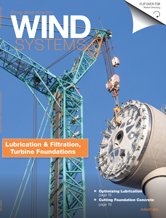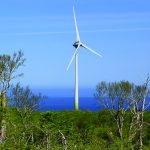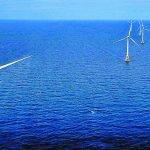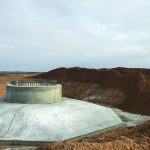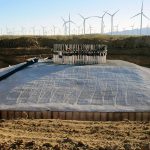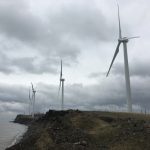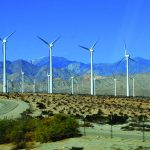 No one said Texas doesn’t try to do everything big.
No one said Texas doesn’t try to do everything big.
So obviously, the Lone Star state’s “bigness” is a point of pride in everything it does.
When it comes to the growing world of wind power, Texas is no exception: It leads the nation in wind-energy production.
If Texas were a country, it would boast the sixth largest wind-power capacity in the world, according to the American Wind Energy Association and the U.S. Energy Information Administration.
But the fact that a state whose history is steeped in oil and gas produces wind energy at all might come as a bit of a surprise to the average resident cranking up the AC in the middle of summer.
 “That’s part of the irony that we’re a leader in oil and gas and that we’re a leader in wind,” said Dr. Michael Webber, deputy director of the Energy Institute, Josey Centennial Fellow in Energy Resources, co-director of the Clean Energy Incubator at the Austin Technology Incubator, and associate professor of Mechanical Engineering at The University of Texas at Austin. “So what it means is, I think, we’re a leader in using our lands for economic purpose.”
“That’s part of the irony that we’re a leader in oil and gas and that we’re a leader in wind,” said Dr. Michael Webber, deputy director of the Energy Institute, Josey Centennial Fellow in Energy Resources, co-director of the Clean Energy Incubator at the Austin Technology Incubator, and associate professor of Mechanical Engineering at The University of Texas at Austin. “So what it means is, I think, we’re a leader in using our lands for economic purpose.”
Geographically Diverse
Texas isn’t planning on abandoning oil and gas. It still produces about 3.2 million barrels of oil a day. But Texas’ geographically diverse regions make it ideal to explore forms of renewable energy – wind being at the forefront.
“Wind energy is a good example of how Texas is diversifying its economy thanks to the state’s pro-business climate,” said Tracye McDaniel, president and CEO of the Texas Economic Development Corporation.

The wind-power industry employed nearly 25,000 residents in 2015 with a total capital investment of $32.7 billion, according to AWEA and EIA.
And experts say wind and Texas make a perfect fit.
“There are a couple of things that are favorable for wind: The resources are quite good,” Webber said. “The other is we have growing demand for electricity, so we need more electricity because we have a growing population and a growing economy.”
Bottom line is Texas uses a lot of electricity.
“The demand for electricity is growing in Texas in a way that it’s not in other states,” Webber said. “So we gotta build something. And then when you gotta build something, you look at your options to see what is the most competitive, and wind is one of the competitive options because it’s cheap; it’s pretty simple; it’s got a policy that supports it, so wind is one of those options that’s favorably treated.”
Renewable Portfolio Standard
Texas established a renewable portfolio standard (RPS) in 1999, amending it in 2005. The current RPS required 5,880 MW of renewable energy by 2015. The state also has a target of reaching 10,000 MW of renewable capacity by 2025, which the wind-energy industry met in 2009. Wind energy has historically been the renewable resource chosen to meet RPS requirements, fulfilling 86 percent of RPS requirements through 2011, according to AWEA.

Following that RPS, Texas has invested billions in infrastructure development that included high-voltage power lines to link cities such as Austin with west Texas, according to oilprice.com.
“Texas made big investments in their electrical grid to make this transition easier and are very supportive of investors and operators participating in all aspects of the business: land owners, investors, manufacturers, suppliers, etc.,” said John Mulhall, plant manager for GRI Renewable Industries, which is building a factory in Amarillo, Texas, to manufacture wind towers. The plant is scheduled to go online this summer.
Those investments have let Texas dominate in wind production. It leads the nation in installed wind capacity at 17,711 MW as of 2015. And it has 10,390 wind turbines and two of the three largest wind farms in the western hemisphere, Roscoe Wind Farm and Horse Hollow Wind Farm, according to AWEA and EIA.
So wind is a good thing for Texas both environmentally and economically.
“It doesn’t burn anything. It has no emissions, so it’s very clean. That’s the good news. The other good news is that it’s pretty simple and cheap … which is pretty favorable all the way around,” he said. “The other thing is that it occurs in rural areas for the most part in west Texas and the panhandle, and so it brings jobs and that kind of growth to some areas that really need the money.”
Concerning Wind
Ironically, a complication with the wind industry is the wind itself, Webber said.
“It’s not always windy, and that’s a challenge,” he said. “It might be windy 30 percent of the time or 50 percent of the time, so it’s not dispatchable or not firm power the way a traditional natural gas or coal-fire powered power plant might be.”
But Webber said wind forecasting is getting better all the time.
“Wind forecasting in the last 15 years — especially the last seven years — has become quite good,” he said. “Wind forecasting is really key to this. And if you predict wind well, it helps you manage the grid. In fact, wind today can be predicted more accurately than demand can be predicted.”

But that grid also is improving, Mulhall said.
“The electrical grid has also been updated to meet the needs of wind-generated electricity as it flows into the grid,” he said.
Companies exist now that are using science and meteorological conditions to better predict what the wind will be and where, Webber said.
Other companies also are taking advantage of the Texas landscape to build wind farms and harness this clean, renewable resource.
“Texas is a global leader in wind energy, with corporate giants like Google and Microsoft investing in wind farms to make their offices in the state 100 percent renewable,” McDaniel said.
In addition to technology behemoths Google and Microsoft, a wind farm will supply the power for social media giant Facebook’s new data center in Fort Worth, Texas.
“There are a lot of companies that build wind farms,” Webber said. “For example, they’ll build a farm and operate it, or they’ll sell the wind farm to someone else. So wind developers will buy land or get a lease for land, and they’ll pay to build a wind farm, and they’ll operate the wind farm and sell the electricity, or they’ll sell that wind farm to another operator.”
Wind Education
The business sector in Texas isn’t alone in pursuing opportunities in the wind industry. Education is tacking into the wind as well.
Texas Tech University’s Wind Science & Engineering Research Center offers the first Wind Science and Engineering doctoral degree program in the country, according to AWEA and EIA.
 Faculty and students research the efficient harvest of wind energy and mitigate wind-related damage. Some of TTU’s wind-energy research goals include assessment of the risks and effects of wind-turbine exposure to extreme wind events, improvement of wind-turbine design codes and analysis and testing of utility-scale wind turbines, AWEA and EIA said.
Faculty and students research the efficient harvest of wind energy and mitigate wind-related damage. Some of TTU’s wind-energy research goals include assessment of the risks and effects of wind-turbine exposure to extreme wind events, improvement of wind-turbine design codes and analysis and testing of utility-scale wind turbines, AWEA and EIA said.
And in July 2010, former Gov. Rick Perry announced an $8.4 million Texas Emerging Technology Fund investment in the Texas Tech University system to achieve research superiority in the development of wind-energy collaboration.
TTU also is partnering with the National Institute for Renewable Energy, which will support the National Wind Resource Center, a nonprofit organization formed by TTU that focuses on wind-power research and education, according to AWEA and EIA.
The Bottom Line
Going green is a noble cause to be sure, but environmentally friendly alternatives to energy production don’t always pay the bills.
Not so with wind, because green also comes in the form of dollars.
“We’re making a lot of money from wind, and it’s a substantial part of our grid,” Webber said. “So wind is relevant for sure. It’s definitely relevant to those rural areas that are making a lot of money from it.”
And the wind industry continues to grow with gale force in Texas with the next generation of wind energy moving into shallow waters — literally. Although that is still a ways off, Webber said.
“There could be some offshore stuff because we have some relatively shallow waters offshore in some really good wind resources,” he said. “There’s been a lot of interest, but nothing’s really happened yet.”
But as far as wind in general, there’s nowhere to go but up, Webber said.
“The costs to generate electricity by wind are dropping and are now competitive with other means of generation,” Mulhall said.
“It’s going to keep growing,” Webber said. “Wind is attractive for a variety of reasons.”
Traditional Energy Problems
And with more environmental restrictions hitting traditional energy production, renewable energy sources such as wind can supply the demand that might be lost otherwise, according to Webber.
“If you build enough of the stuff, you’ll displace others,” he said. “That’ll be driven a lot by environmental policy. There are tighter and tighter rules for getting rid of mercury and other toxic substances that are emitted from flue gases and coal plants, for example. As you tighten the rules on mercury, then there’s pressure on the dirtier power plants to not operate, and as you have things shutting down, then you can replace that power with something else, and wind will have an opportunity to fill that gap.”
















